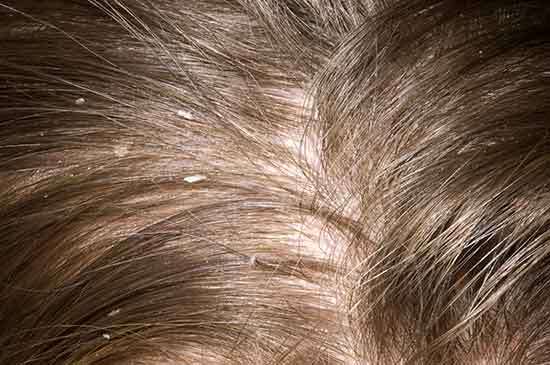About dandruff
Dandruff is dry flakes of skin on the scalp. It happens when a lot of dead skin cells build up on the scalp.
Dandruff is a mild type of seborrhoeic dermatitis. This is dermatitis that develops where the skin is oily.
Dandruff is usually caused by the overgrowth of fungus that’s naturally found on your scalp. It isn’t contagious.
Stress, cold and dry weather, and certain medical conditions and medicines can make dandruff worse.
Dandruff is very common in teenagers and adults. You’re more likely to see dandruff when your child reaches puberty, because this is when the oil glands become more active.
It’s also more likely to affect boys and men.
In babies, dandruff is called cradle cap.
Symptoms of dandruff
The most common symptom of dandruff is a dry, flaky and itchy scalp. The scalp can be sore or inflamed, particularly if your child scratches a lot. On children with dark skin, the scalp might also look brown, purple or grey. On children with light skin, the scalp might look red.
You’ll see a lot of tiny white, scaly flakes on the hair, shoulders and back. The flakes are more noticeable on dark clothing.

Dandruff is different from psoriasis. With psoriasis, the scales are usually much thicker and silvery, and they often occur in obvious patches.
Medical help: when to get it for children with dandruff
Take your child to see your GP if your child:
- has dandruff that doesn’t improve after 2-3 weeks with the dandruff treatment described below
- has thick, flaky patches in the scalp
- keeps scratching despite treatment
- has a rash on their body.
Dandruff treatment
You can usually control dandruff by regularly washing hair with a medicated shampoo. You can buy medicated shampoo from the pharmacy or supermarket.
Look for shampoos with the following ingredients:
- 2% ketaconazole – for example, Nizoral or Sebizole
- selenium sulphide – for example, Selsun Gold
- coal tar – for example, Neutrogena T-gel.
If you don’t know which shampoo to buy, ask your pharmacist.
You or your child should massage the shampoo into their scalp and leave it in contact with the skin for 5 minutes, then rinse out.
Do this daily for 2-3 weeks.
If the dandruff is very itchy or inflamed, your doctor might prescribe a steroid lotion to be applied to the scalp after using the shampoo.
Once your child’s dandruff is under control, cut back the use of medicated shampoo. For example, your child can wash with their usual shampoo for one wash, then use medicated shampoo for the next wash.
Dandruff prevention
To stop the dandruff from coming back, your child can use medicated shampoo as long they need to. For example, some children might keep using medicated shampoo once or twice a week.